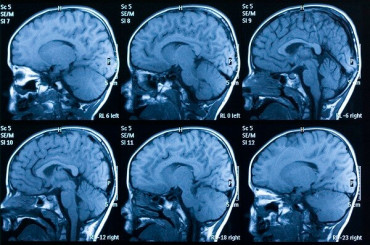Was Your Stroke Misdiagnosed?

On average, an individual in the United States suffers from a stroke every 40 seconds. Stroke is the third leading cause of death in this country (after heart disease and cancer), and it is also the top cause of serious, long-term disability. Tragically, over 140,000 individuals die each year as a result of a stroke.
While these statistics can seem alarming to the average individual, they hit much closer to home if you are a stroke survivor yourself. As you have experienced, strokes do not discriminate. Strokes happen to people of all ages, races, and genders.
What is a Stroke?
The most common signs and symptoms of a stroke include:
- Sudden weakness or numbness of the face, arm, or leg, particularly if only one side of the body is affected
- Sudden confusion, difficulty speaking, or comprehending
- Sudden trouble with vision in one or both eyes
- Sudden difficulty walking, dizziness, or loss of balance
- Sudden severe headache
These symptoms can occur when a blood vessel that is carrying oxygen and nutrients to the brain becomes blocked by a clot or ruptures. When this occurs, part of the brain is unable to receive blood and oxygen, which can result in damage to the brain cells.
It is also important to note that there are several distinct types of stroke. An ischemic stroke is caused by a clot or blockage within an artery that leads to the brain, and a hemorrhagic stroke occurs when a blood vessel ruptures. There is also something called a TIA – transient ischemic attack. This “mini stroke” can also be referred to as a “warning stroke.” TIA is caused by a temporary clot, so the symptoms only last for a short period of time – most are less than five minutes. While a TIA does not result in permanent injury to the brain, it is a warning that a stroke could occur in the near future.
The Frequency of Misdiagnosis
The unfortunate reality is that it can be relatively common for doctors to misdiagnose stroke. In fact, researchers at Johns Hopkins University published a study on this in 2014. The study revealed that the warning signs of potentially severe strokes are discounted or overlooked by doctors in tens of thousands of instances each year. This means that there are tens of thousands of patients suffering from disabling strokes who could have received preventative treatments.
A large number of patients who went to the emergency room complaining of headaches or dizziness were either sent home or told they had a benign condition like an ear infection or migraine. Additionally, patients under the age of 45, women, and minorities were all more likely to be misdiagnosed after suffering from a stroke. (While a stroke can happen to anyone, nearly three-quarters occur in individuals over the age of 65.)
Diagnosing a Stroke
As a stroke survivor, you understand just how important it is to seek medical attention immediately after you experience a stroke or some of the warning signs. There are several steps that your doctor or physician should have followed during your diagnosis and examination.
1. Medical History. In order to have a complete picture of a patient’s health, it is important for a doctor or physician to have as much information as possible regarding the full medical history. This includes previous conditions, operations, illnesses in your family, current medications, etc. The doctor will also want to know about the symptoms you have experienced.
2. Physical Examination. After checking your vitals, a neurologic examination will then test the nerves and muscles to see if reflexes, coordination, strength, and/or sensation have been impacted. Questions will also be asked to examine thinking, speech, and memory – which are all factors that can be impacted by a stroke.
In order to correctly diagnose a stroke, a proper and complete examination is necessary. Maybe you went to a doctor complaining of sudden headache or dizziness and you were quickly just written a prescription and sent on your way without a full evaluation. Or maybe you took your mother to the emergency room because she was experiencing confusion, and she was simply diagnosed as experiencing the symptoms of dementia – only to later suffer from a debilitating stroke. If you experienced something similar to these examples, then there is a likelihood that you did not receive the medical care you deserved.
Next Steps to Take
If you feel like your doctor didn’t adequately do his or her job, the first step is to immediately seek a second opinion. The last thing you want to do is have a TIA that is misdiagnosed, only to experience a larger stroke in the near future that could have been prevented.
You also have the option to pursue legal action. If misdiagnosis or a delayed diagnosis led to severe injury for you or a loved one, then you may have a case for medical malpractice. Contact one of Ross Feller Casey’s experienced stroke attorneys to learn more about your options.
Ross Feller Casey, among the nation’s preeminent medical malpractice law firms, is the recognized legal authority in stroke lawsuits. The firm has won a series of remarkable seven- and eight-figure recoveries on behalf of individual clients catastrophically injured as a result of the failure to timely diagnose and treat their stroke or stroke symptoms.
Disclaimer: Ross Feller Casey, LLP provides legal advice only after an attorney-client relationship is formed. Our website is an introduction to the firm and does not create a relationship between our attorneys and clients. An attorney-client relationship is formed only after a written agreement is signed by the client and the firm. Because every case is unique, the description of awards and summary of cases successfully handled are not intended to imply or guarantee that same success in other cases. Ross Feller Casey, LLP represents catastrophically injured persons and their families in injury and wrongful death cases, providing legal representation in Pennsylvania and New Jersey.





